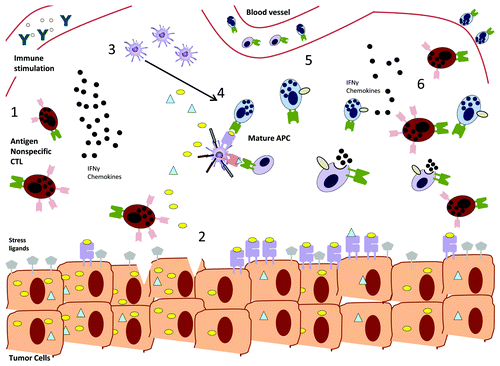Figures & data
Figure 1. Potential synergy between antigen-specific and nonspecific CD8+ T cell responses. (1) Immunostimulatory therapies induce αβ memory CD8+ T cells to become activated in an antigen-nonspecific fashion, upregulating receptors such as NKG2D. (2) Antigen nonspecific cells can recognize transformed cells via stress ligands, lyse them and hence cause the release of sequestered tumor antigens. (3) Cytokines and chemokines released by nonspecific cells recruit other immune cells including antigen-presenting cells (APCs), which can engulf tumor antigens and hence (4) activate antigen specific CD4+ and CD8+ T cells. At this stage, vaccination strategies, may aggravate tumor-specific immune responses. (5) Antigen-specific and nonspecific cells are able to attack tumor cells by targeting both tumor antigens and stress ligands, making the arisal of escape variants less likely. (6) Cytokine secretion by antigen-specific cells maintains and continuously recruits antigen nonspecific cells to the tumor site.
